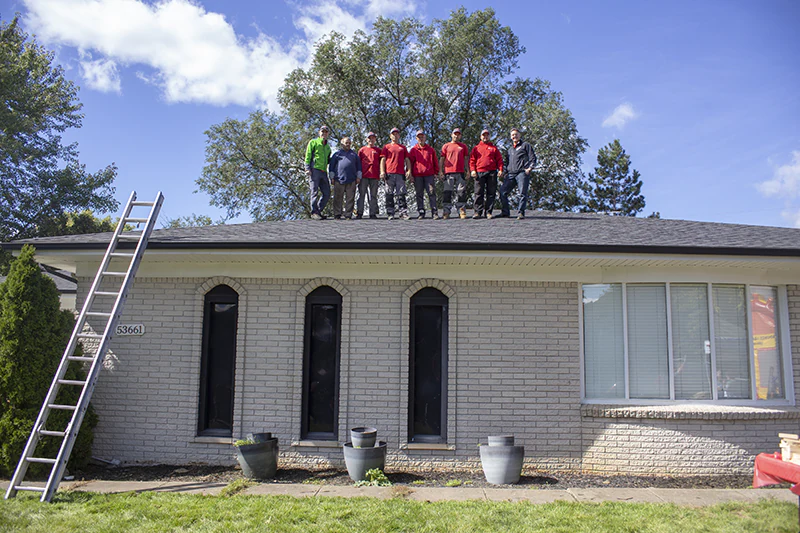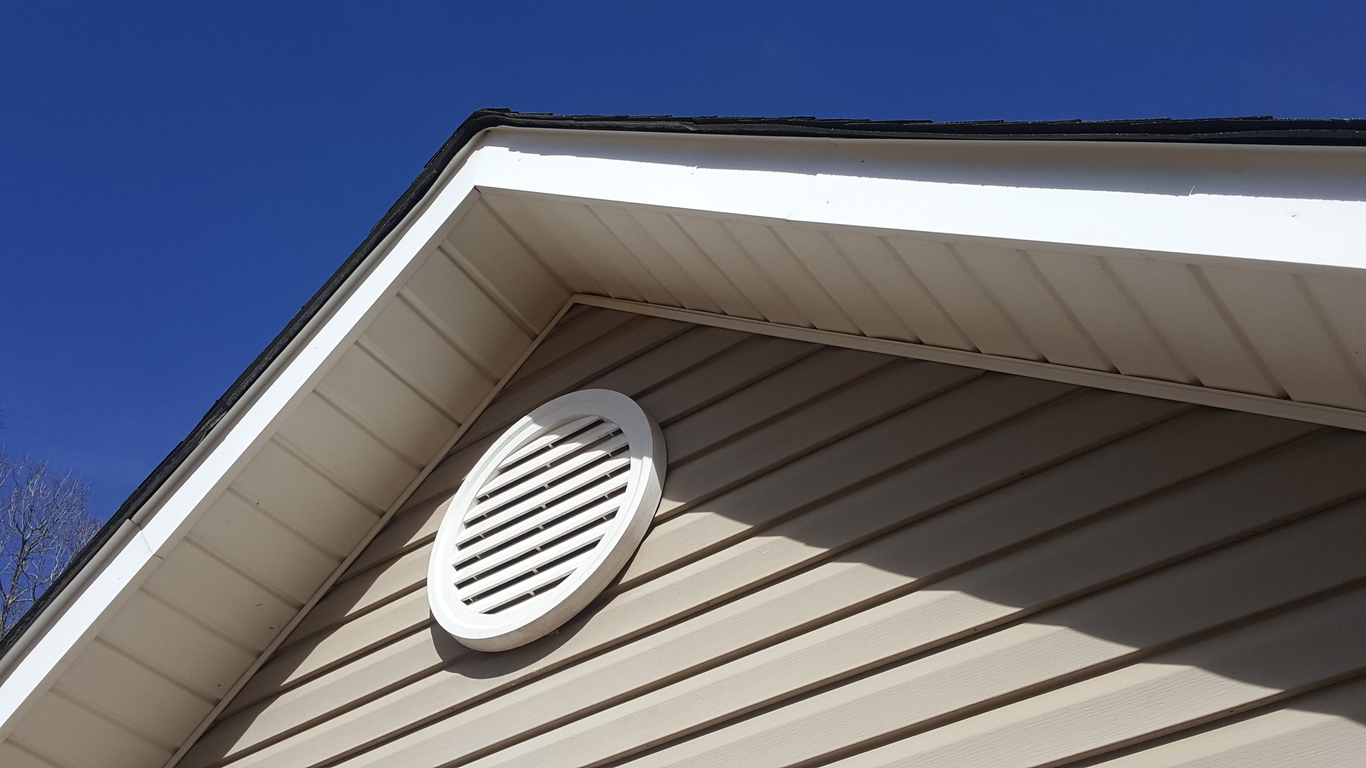
Attic ventilation is crucial for maintaining a healthy and energy-efficient home. It is essential for controlling moisture and preventing mold, mildew, and rot. Ventilation regulates temperature and reduces energy costs. It also helps improve indoor air quality by preventing the buildup of pollutants and allergens. All of this gives longevity to your roof.
Roof vents are installed on your roof to facilitate attic ventilation. There are several types of roof vents, each with advantages and disadvantages, and they vary depending on the type of roof. They can be passive, active, or hybrid vents.
Why Does The Roof Need A Proper Ventilation System?
Check out our post and find out why Proper attic ventilation is essential.
Types Of Roof Vents
Passive vents
Passive vents or static roof vents are a simple and affordable way to improve attic ventilation. They rely on natural airflow to move air through the attic, and they are typically easier to install and maintain than active vents.
Standard passive vents include Ridge vents, installed along the roof’s ridge; gable vents, located in the gable ends of the roof; and curb vents, which are raised platforms on the roof surface.
When choosing passive vents, consider your roof type, climate, and attic size. Call us for a free consultation and help to select the best option.
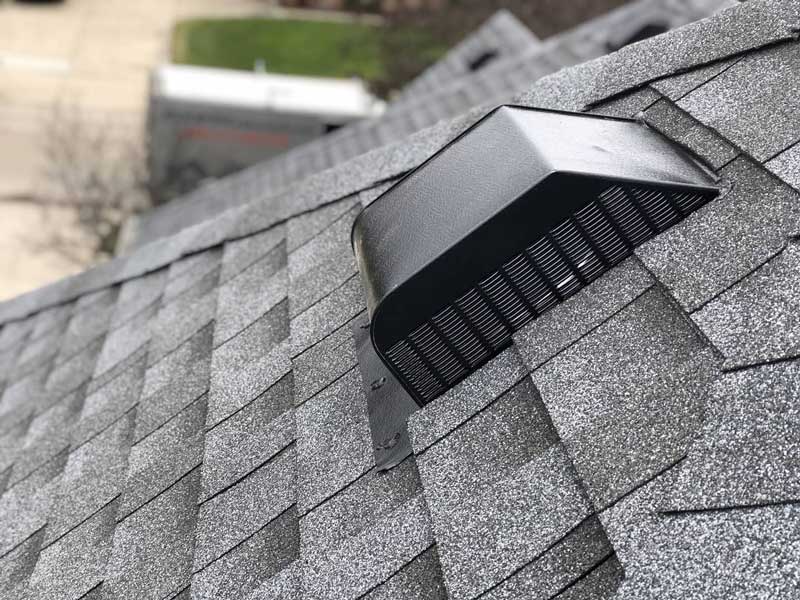
Active Vents
Active Vents boost attic ventilation by utilizing mechanical means to create airflow. They provide a more powerful ventilation solution than passive vents. While they may be more expensive to install and maintain, this vent system can be particularly effective in areas with limited natural airflow.
Here are some of the most common types of active vents:
Turbine Vents
Turbine vents use wind power to rotate a turbine, which draws hot air from the attic space and expels it outside. These are relatively affordable and effective vents for areas with consistent wind, but wind turbines may need to be more efficient in areas with low wind speeds.
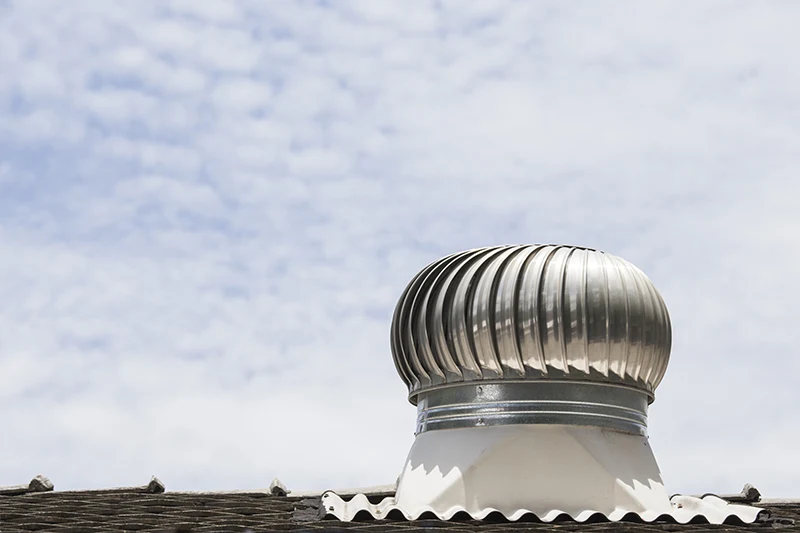
Solar-Powered Attic Fans
This type of roof vent uses solar energy to power its motors, drawing air and expelling it outside. It is a sustainable and energy-efficient option for roof ventilation, especially in areas with abundant sunlight. Still, Solar-powered attic fans may be less effective in areas with limited sunlight or during cloudy periods.
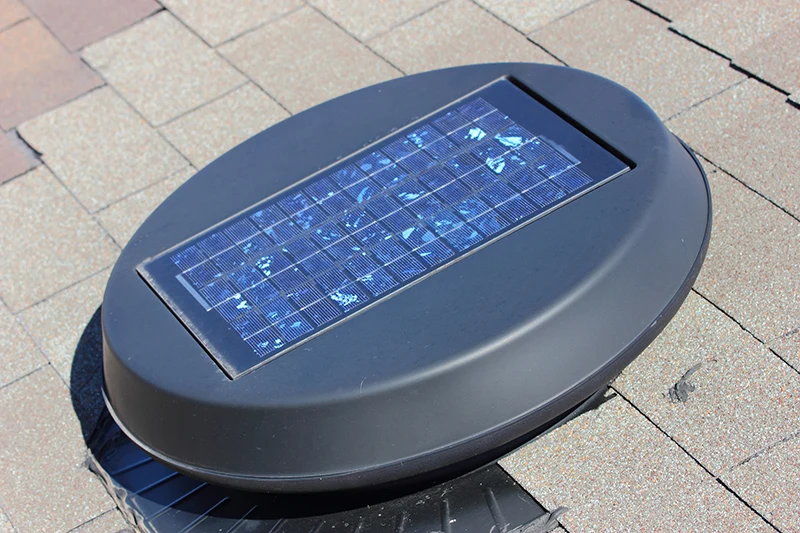
Whole-House Attic Fans
Install this ventilation system in the attic and control it remotely. It draws hot air from the attic and expels it outside, helping to cool your entire home. Whole-house attic fans can effectively reduce heat buildup in the attic and improve indoor air quality. However, they can be more expensive to install and operate than other active vent types.
When choosing active vents, consider your budget, energy efficiency goals, and your home’s needs. Call a roofing contractor to help determine the best active vents for your attic. Yeah, that’s us.
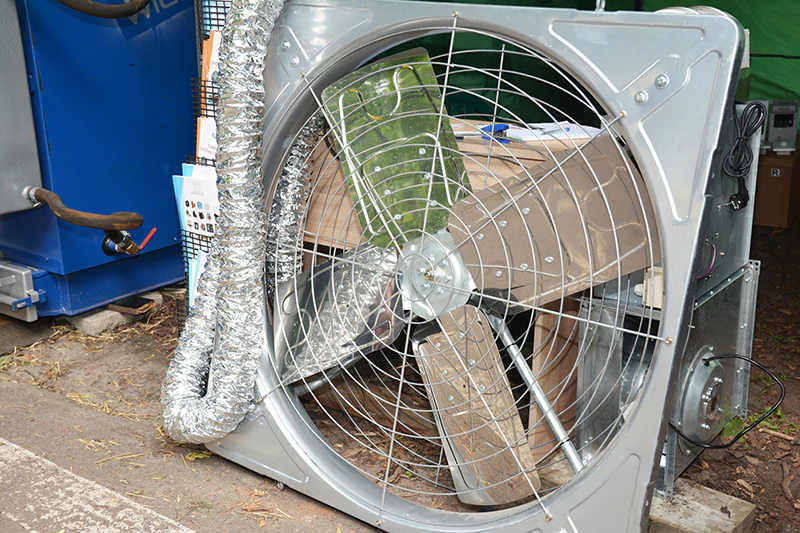
Hybrid Vents: Combining the Best of Both Worlds
Hybrid vents offer a unique approach to attic ventilation. By combining elements of passive and active vents, hybrid vents can balance natural and mechanical ventilation, ensuring adequate airflow in various conditions.
Solar-Powered Turbine Vents
A Solar-Powered Turbine roof Vent combines the sun’s power with the efficiency of turbine vents. Solar panels capture sunlight and convert it into electricity, which powers the turbine vents. They offer a sustainable and energy-efficient solution for attic ventilation, especially in areas with abundant sunlight. Still, the effectiveness of roof ventilation using solar-powered turbine vents can be limited in areas with low sunlight or cloudy conditions.
Combination Ridge Vents
Combination Ridge Vents incorporate both passive ridge vents and active ventilation components, such as built-in fans or solar panels. They provide a balanced approach to attic ventilation, combining the natural airflow of ridge vents with the added power of active components. The specific features and capabilities of combination ridge vents can vary, so choosing a product that meets your roof system is essential.
Hybrid Attic Fans
Hybrid Attic Fans can operate in passive and active modes, depending on the needs of your roof system. In passive mode, they rely on natural airflow; in active mode, they use a motor to draw air from the attic. They offer flexibility and adaptability, allowing you to adjust ventilation based on your needs and conditions. However, they may require more complex installation and maintenance than traditional passive or active vents.
Roof Ventilation Based on Roof Type
Gable Roof
The type of roof you have significantly impacts the best ventilation method.
If you have a Gable roof, you can use static vents like ridge vents, a popular choice for gable roofs, as they allow for continuous airflow. You can also use gable vents. They can be installed directly in the gable ends for additional ventilation. Box vents are also an option or an alternative to ridge vents. Soffit vents can be installed in the soffits under the eaves to provide intake ventilation.
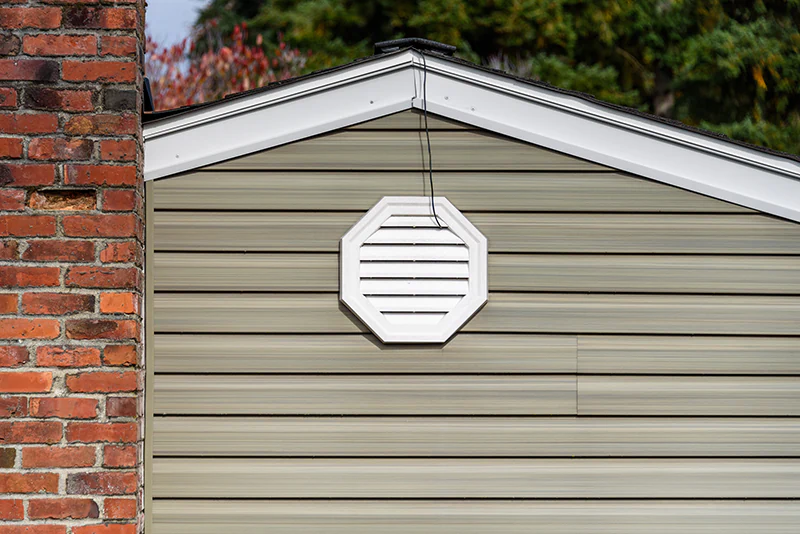
Hip Roof
Ridge vents аre a common choice for hip roofs. Ridge vents offer continuous airflow along the ridge. Hip vents can be installed on the hips of the roof for additional ventilation. You can also use box vents. They can be installed in the soffits or eaves for intake ventilation, as on gable roofs.
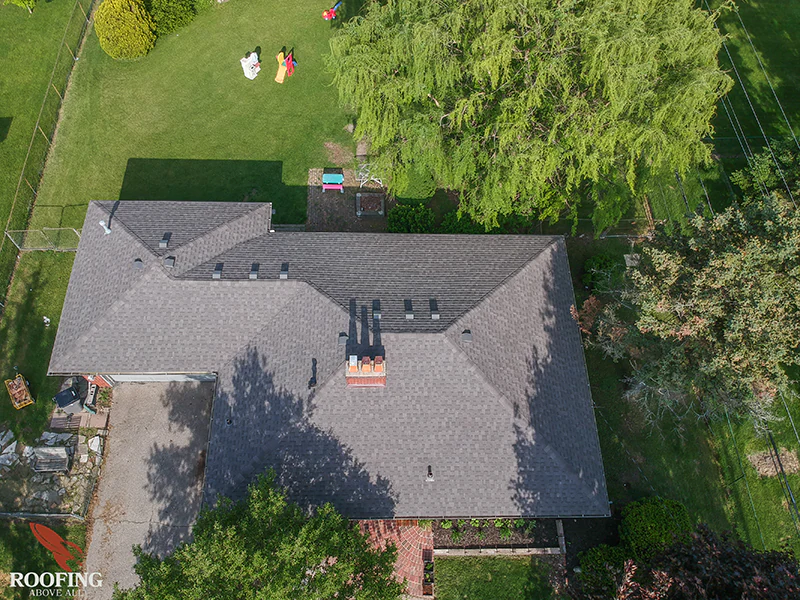
Shed Roof
You can use box and ridge vents on shed roofs like on hip roofs. Other options include wind turbines or venting skylights to let air escape.
Flat Roof
You can use Rooftop turbines on a flat roof to create a strong airflow. Homeowners can use Box vents, which may be less effective on flat roofs. Soffit vents intake fresh air and work in harmony with your exhaust ventilation. Mechanical ventilation is also an option; attic fans or whole-house fans can improve airflow in flat roofs and allow air to escape.
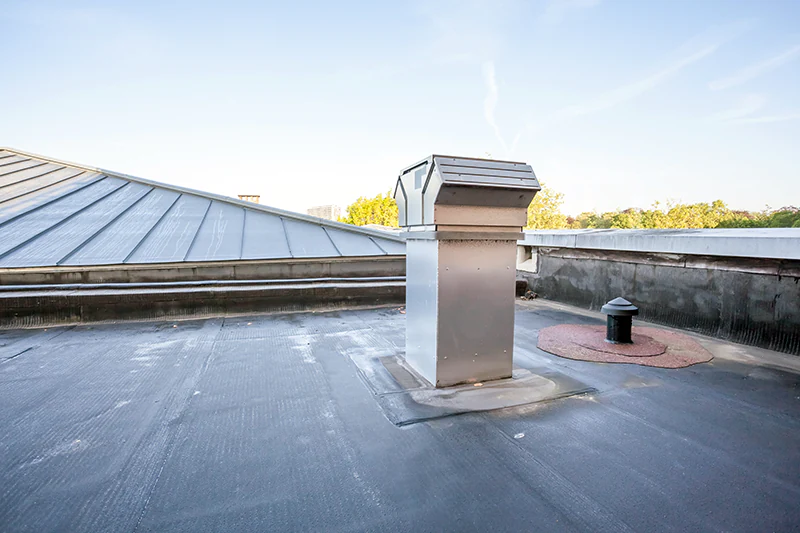
Can A Roof Be Over-ventilated?
Yes, a roof can indeed be over-ventilated. While proper ventilation is essential for maintaining a healthy attic environment and preventing moisture-related issues, it’s crucial to strike a balance. Over-ventilation can lead to several problems like noise, energy loss, and air quality issues. Signs of over-ventilation can be feeling cold drafts near vents or in attic spaces, experiencing a noticeable increase in heating or cooling costs, hearing unusual noises from the attic or near vents, and noticing dry conditions inside the home.
Can Roof Vents Get Clogged?
Roof vents can undoubtedly get clogged. Clogging can happen due to various reasons, including the accumulation of debris such as leaves, twigs, insects, and other materials. Animals like birds, squirrels, and other creatures may also build nests or seek shelter in vents, obstructing airflow. Ice and snow can block vents in colder climates, especially during winter. Additionally, moisture can lead to mold or mildew growth, which can reduce the effectiveness of vents.
Signs of clogged roof vents include a noticeable decrease in ventilation, especially in attics or crawl spaces. Musty odors in attic air, unusual noise from vents, ice dams, and increased energy bills can also be indicators of a clogged vent.
To prevent clogged roof vents, inspect them periodically, remove any debris or obstructions, install screens or baffles to prevent further blockage, and consider professional maintenance services. If you suspect your roof vents are clogged, it’s advisable to have them inspected and cleaned by a professional to restore proper airflow and prevent further damage to your ventilation system.
Roof Vent Repair
Roof vent repair is essential to maintaining proper ventilation and preventing moisture buildup in your attic. If your roof vents, including power vents, are damaged, blocked, or not functioning correctly, they can lead to various problems, including mold growth, rot, and structural damage. Common roof vent repair issues include broken louvers, clogged vents, seized power vents, and damaged flashing. Regular inspections and timely repairs can help prevent these problems and ensure the longevity of your roof.
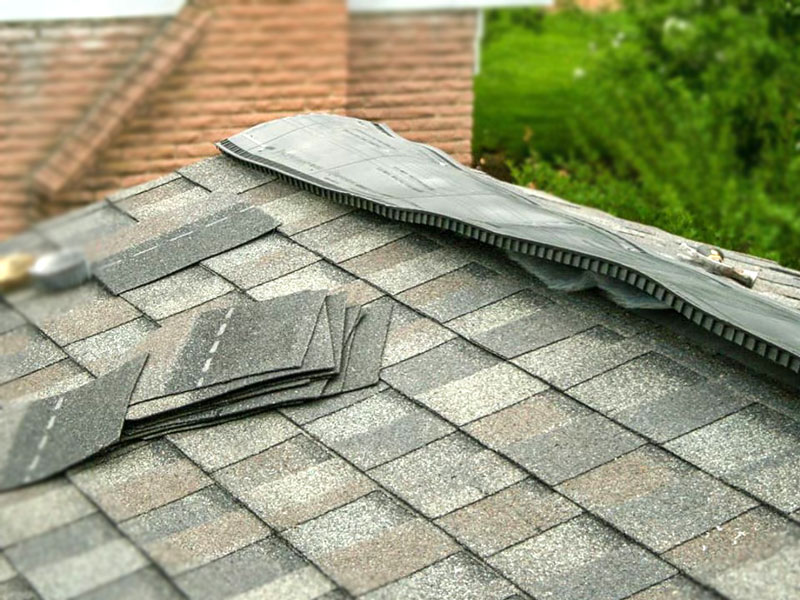
How Many Vents Should I Have on A Roof?
The number of vents needed on a roof depends on several factors, including roof size, roof pitch, roof material, climate, insulation, and local building codes. Larger roofs generally require more vents, while steeper roofs tend to have better natural airflow and may need fewer vents. Some materials, like metal, can conduct heat more efficiently, potentially requiring more ventilation. Hot and humid climates typically require more ventilation than colder, drier climates. Proper insulation can help reduce the need for excessive ventilation.
As a general guideline, many experts recommend a ratio of one square foot of net free ventilation area for every 150 square feet of attic space. For example, a 1,500-square-foot attic would need approximately 10 square feet of net-free ventilation area.
It’s important to consult with a roofing professional or HVAC specialist to determine the optimal number of vents for your specific roof and climate. They can assess your home’s needs and recommend the best attic ventilation system.
